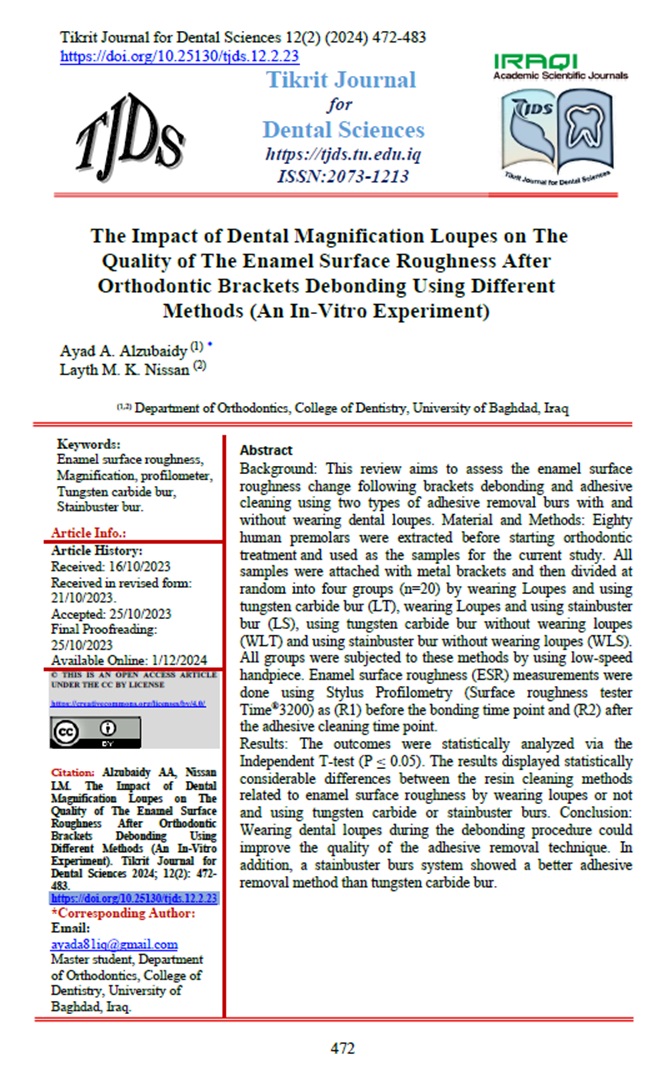The Impact of Dental Magnification Loupes on The Quality of The Enamel Surface Roughness After Orthodontic Brackets Debonding Using Different Methods (An In-Vitro Experiment)
Ayad A. Alzubaidy
Department of Orthodontics, College of Dentistry, University of Baghdad, Iraq
Layth M. K. Nissan
Department of Orthodontics, College of Dentistry, University of Baghdad, Iraq
DOI: https://doi.org/10.25130/tjds.12.2.23
Keywords: Enamel surface roughness, Magnification, profilometer, Tungsten carbide bur, Stainbuster bur.
Abstract
Background: This review aims to assess the enamel surface roughness change following brackets debonding and adhesive cleaning using two types of adhesive removal burs with and without wearing dental loupes. Material and Methods: Eighty human premolars were extracted before starting orthodontic treatment and used as the samples for the current study. All samples were attached with metal brackets and then divided at random into four groups (n=20) by wearing Loupes and using tungsten carbide bur (LT), wearing Loupes and using stainbuster bur (LS), using tungsten carbide bur without wearing loupes (WLT) and using stainbuster bur without wearing loupes (WLS). All groups were subjected to these methods by using low-speed handpiece. Enamel surface roughness (ESR) measurements were done using Stylus Profilometry (Surface roughness tester Time®3200) as (R1) before the bonding time point and (R2) after the adhesive cleaning time point.
Results: The outcomes were statistically analyzed via the Independent T-test (P ≤ 0.05). The results displayed statistically considerable differences between the resin cleaning methods related to enamel surface roughness by wearing loupes or not and using tungsten carbide or stainbuster burs. Conclusion: Wearing dental loupes during the debonding procedure could improve the quality of the adhesive removal technique. In addition, a stainbuster burs system showed a better adhesive removal method than tungsten carbide bur.




